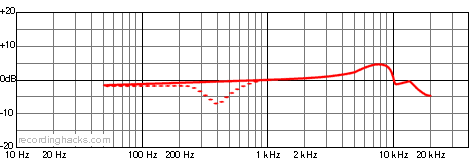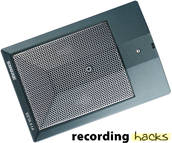 Shure Beta 91A
Shure Beta 91A
Cardioid Condenser Microphone
The Beta 91A is a boundary mic with a cardioid electret condenser capsule. It produces a half-cardioid response pattern, and is intended for use on piano and kick drums.
What are the differences between the Beta 91 and Beta 91A?
Both are half-cardioid boundary mics, with the same recommended applications. Both produce a half-cardioid response using the stock capsule.
The Beta 91A has about 6dB less self-noise (29.5 dBA vs. 35dBA), and higher sensitivity (3.8 mV/Pa vs. 1.1 mV/Pa).
The Beta 91A has a built-in XLR jack, whereas the original model required the use of an inline preamp (connected via mini-XLR cable).
Both mics use cardioid capsules from other mics in Shure’s product line — the Beta 91 used the RPM108 capsule (from the Beta 98) while the 91A uses the RPM98A/C (from the Beta 98A).
The Beta 91A introduces a “frequency contour” EQ switch, which cuts 7dB at 400Hz, “for a strong low frequency ‘punch’ with plenty of higher-frequency attack.”
Additional details are forthcoming.
Permalink: Shure Beta-91A
The mic was released in 2010.
Specifications
| Frequency Response - CardioidClick Graph to Compare! |
|---|
 |
| Pickup Patterns | Pads & Filters |
|---|---|
|
Cardioid
(3.8 mV/Pa; 50 - 15,000 Hz) |
|
| Capsule Dimensions | Impedance | SPL/Noise |
|---|---|---|
| Diameter n/a |
146 Ohms (Low) | Max SPL: 155 dB Self-noise: 29.5 dB(A) |
| Weight | Length | Max Diameter | Interface(s) |
|---|---|---|---|
| 470g (16.58oz) | 139mm (5.47'') | n/a |
|
| Power Specifications |
|---|
|
Did we get anything wrong on this page? Please let us know!

